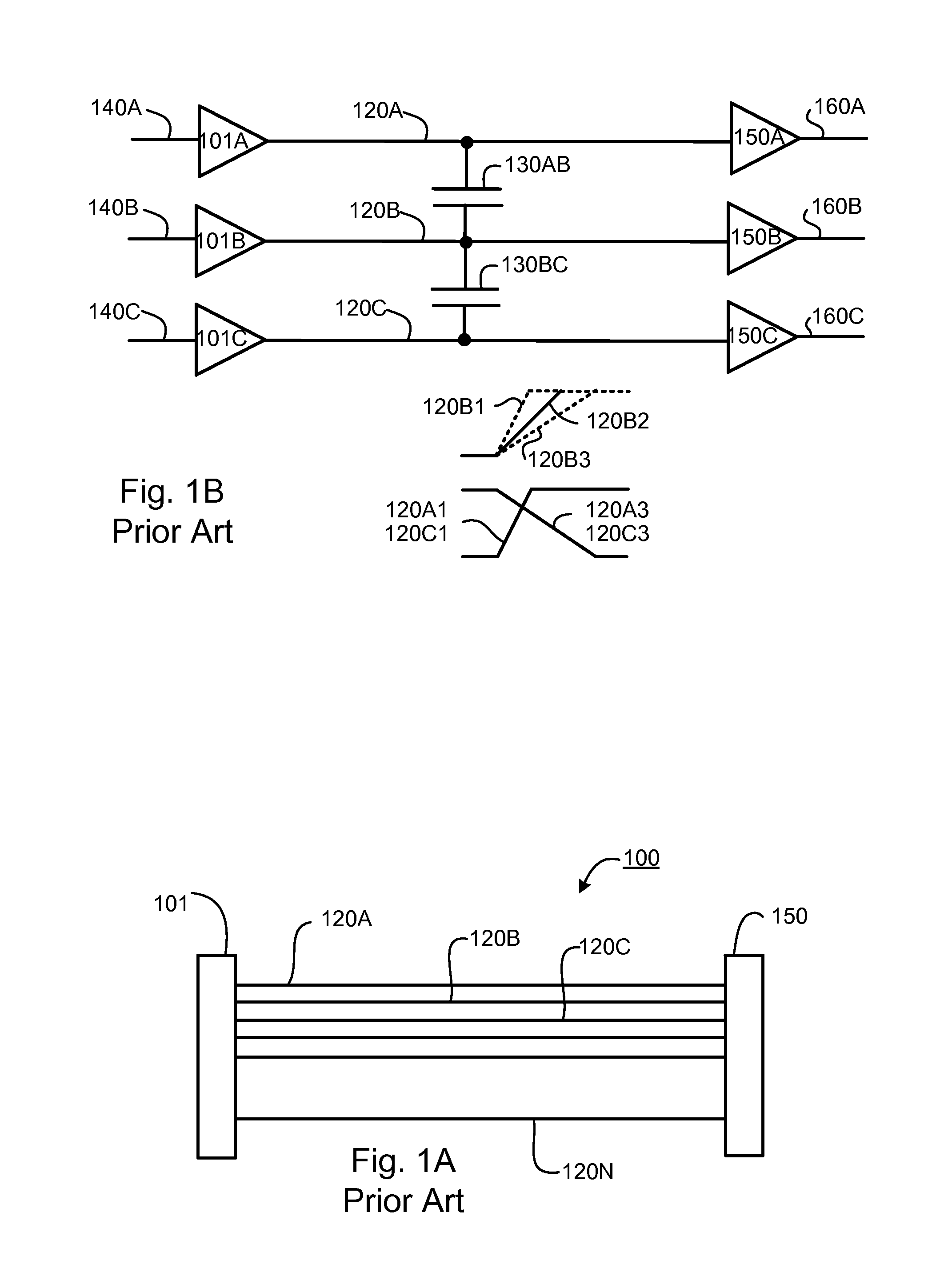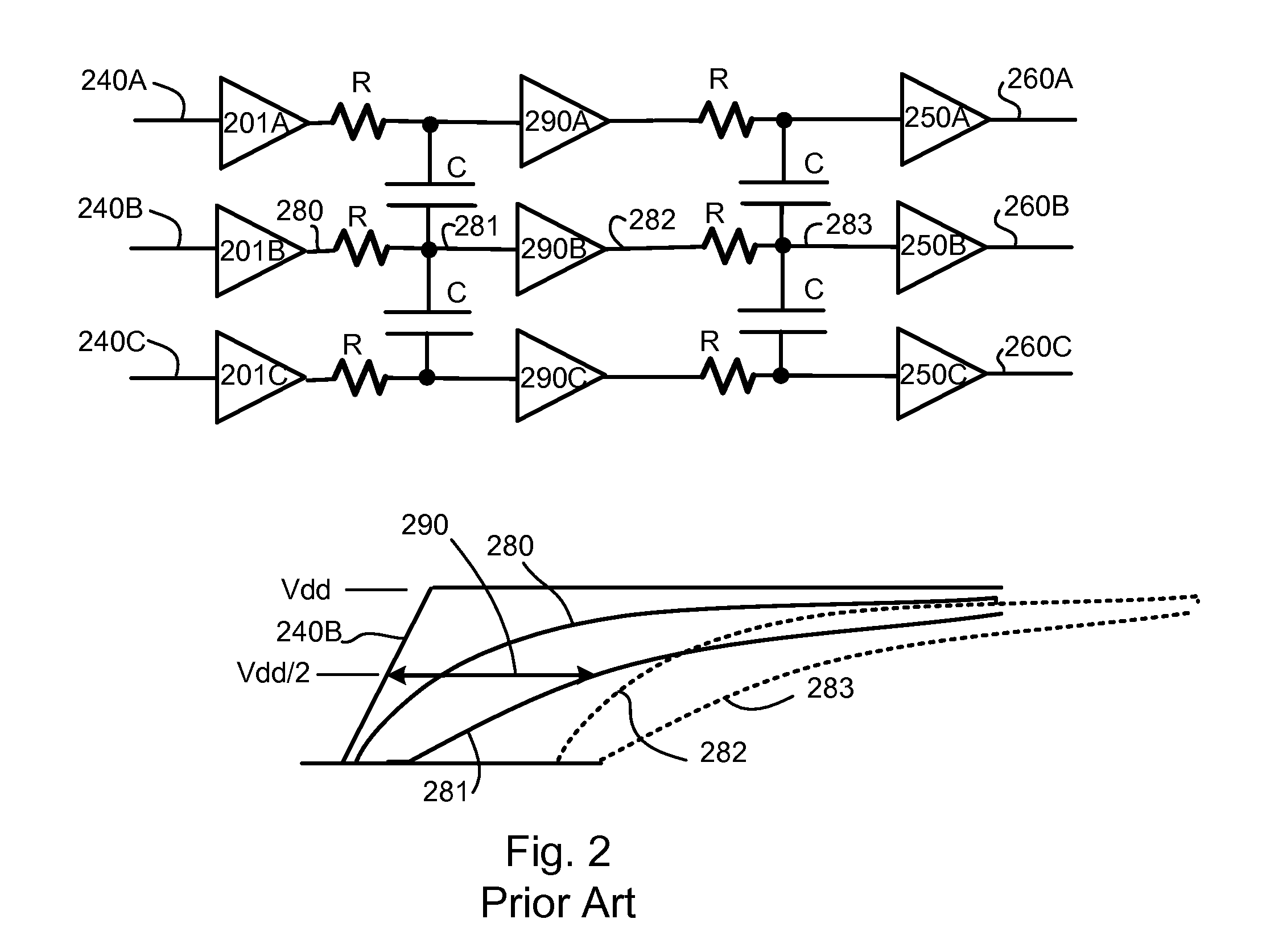Signal Transmission Reducing Coupling Caused Delay Variation
a signal transmission and delay variation technology, applied in the field of electric signaling, can solve problems such as difficulties in achieving “late mode” timing and difficulties in achieving “early mode”
- Summary
- Abstract
- Description
- Claims
- Application Information
AI Technical Summary
Benefits of technology
Problems solved by technology
Method used
Image
Examples
Embodiment Construction
[0011]Embodiments of the invention provide reduction or elimination of coupling caused delay variations in a signaling bus. Embodiments of the invention provide for fast transition rates for signals of a first transition direction and slower (and / or delayed) transition rates for signals of a second direction, allowing repowering blocks to switch at a switching threshold that speeds signals of the first transition direction versus signals of the second direction.
[0012]In a method embodiment of the invention a signaling bus has a plurality of logical lanes, each logical lane being physically adjacent to at least one other logical lane. Each logical lane comprises an even signal path and an odd signal path. The method ensures that a one cycle path having a first transition direction transmitted on a first signal path in the signaling bus never encounters a one cycle signal having a second transition transmitted on an adjacent second signal path in the signaling bus.
[0013]In an apparatu...
PUM
 Login to View More
Login to View More Abstract
Description
Claims
Application Information
 Login to View More
Login to View More - R&D
- Intellectual Property
- Life Sciences
- Materials
- Tech Scout
- Unparalleled Data Quality
- Higher Quality Content
- 60% Fewer Hallucinations
Browse by: Latest US Patents, China's latest patents, Technical Efficacy Thesaurus, Application Domain, Technology Topic, Popular Technical Reports.
© 2025 PatSnap. All rights reserved.Legal|Privacy policy|Modern Slavery Act Transparency Statement|Sitemap|About US| Contact US: help@patsnap.com



